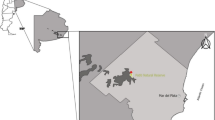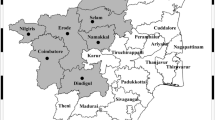Abstract
Background
Species that are at high levels of the food web have often been used as bioindicators to evaluate the presence of persistent contaminants in ecosystems. Most of these species are long-lived, so pollutant burdens may be integrated in some complex way over time. This makes them particularly sensitive to deleterious effects of Persistent Organic Pollutants (POPs). Birds have been suggested as useful organisms for monitoring pollutant levels. Traditionally such studies have been carried out with raptors such as osprey (Pandion haliaetus), peregrine falcon (Falco peregrinus), bald eagle (Haliaetus leucocephalus), etc. In this paper we present the results of a monitoring study conducted on two raptor species, osprey (Pandion haliaetus) and red kite (Milvus milvus), inhabiting a Mediterranean island (Menorca, Spain). These two species have different feeding habits; ospreys prey on fish and red kites feed on terrestrial species. This study constitutes a good opportunity to investigate if differences in feeding habits (aquatic vs. terrestrial) influences the contaminants pattern in two species inhabiting the same area.
Methods
The study was conducted in a non-destructive way, using only failed eggs, to avoid the damage of the population stability. Eggs were collected during the period 1994–2000. The contaminants examined were dichlorodiphenyltrichloroethanes (DDTs, including DDT and its main metabolite, DDE), polychlorinated biphenyls (PCBs), including ortho PCBs (PCBs with at least one Chlorine atom in the ortho position): #28, 52, 95, 101, 123+149, 118, 114, 153, 132+105, 138, 167, 156, 157, 180, 170, 189, 194; and non ortho PCBs (PCBs with no Chlorine atom in the ortho position): #77, 126, 169 and all the polychlorinated dibenzo-p-dioxins (PCDDs) and polychlorinated dibenzofurans (PCDFs) with Chlorine atoms at the 2,3,7 and 8 position (2,3,7,8-substituted PCDDs and PCDFs). The analysis of organochlorine compounds was performed using a sample treatment based on a Solid Phase Matrix Dispersion procedure. Ortho PCBs and DDTs were determined by HRGC-µECD; non ortho PCBs and PCDD/Fs were determined by HRGC-HRMS.
Results and Discussion
The sum of the ortho PCB congeners analysed ranged from 0.94 to 15.03 µg/g wet weight (ww) for ospreys and from 1.0 to 11.2 µg/g ww for red kites. In both species, PCB congeners #153, #138 and #180 accounted about 75% to total ortho PCB concentrations. Regarding non ortho PCBs, for ospreys, concentrations ranged from 0.16 to 1.39 ng/g wet weight (ww) and for red kites from 0.12 to 0.51 ng/g ww, being congener #126 the most abundant. Concerning DDTs, concentration for ospreys ranged from 0.07 to 1.03 µg/g ww; and for red kites ranged from 0.90 to 2.10 µg/g ww, representing DDE more than 95% of the total DDTs, which proves a past use of DDT in the study area. Differences in contaminant levels between species are probably associated to feeding habits. The fish-eating species presents the highest PCB levels, whereas the terrestrial species exhibits the highest DDT levels. PCDD/Fs in ospreys were in the range 2.6–14.2 pg/g ww, while in red kites the range was slightly wider (22.2–43.2 pg/g ww), being PCDDs the major contributors in black kites. Ospreys had PCDDs similar to PCDF concentrations. PCDD/F profiles were mostly influenced by OCDD in both species. Non ortho PCBs were the major contributors to calculated Toxic Equivalent Quantity (TEQs) in both species.
Conclusion
In both species studied, ortho-PCBs could represent a problem of concern since 57% of the eggs exhibited levels higher than 4 µg/g ww, reported as the level that could cause reduced hatchability, embryo mortality, and deformities in birds.
Recommendations and Outlook
Results found in this study suggest that a more detailed study to clear up possible deleterious effects of PCBs on the bird populations studied here should be done.
Similar content being viewed by others
Author information
Authors and Affiliations
Corresponding author
Rights and permissions
About this article
Cite this article
Jiménez, B., Merino, R., Abad, E. et al. Evaluation of Organochlorine Compounds (PCDDs, PCDFs, PCBs and DDTs) in Two Raptor Species Inhabiting a Mediterranean Island in Spain (8 pp). Env Sci Poll Res Int 14 (Suppl 1), 61–68 (2007). https://doi.org/10.1065/espr2006.01.015
Received:
Accepted:
Published:
Issue Date:
DOI: https://doi.org/10.1065/espr2006.01.015




